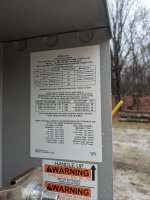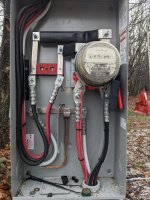PCBelarge
Member
- Location
- Westchester County NY
- Occupation
- Electrical Training and Consulting
I am kind of disappointed to see some of the responses on this site about modifying lugs to "customize" them for the installation. I have been training since the '90s and consulting since the early 2000s. One of the things I have learned about consulting (sort of what participants on this site do as well), is one is 100% responsible for one's answers to questions. If you do not know the answer, find it. In the case of the Thread I mentioned, The manufacturer is Burndy. They are very responsive to calls. I have reached out to them in regards to lugs myself and here are a couple of things I learned. 1. The flat back to a lug is to make contact with the complete length of the lug. The reason for 2 holes - it is difficult to match 2 flat surfaces for the contact necessary so the termination does not overheat, hence the need for 2 holes on some lugs. 2. The "density," (the dimensions of the lug/termination point/Bus in service gear- Panelboards), is a term used in regard to the bus as well and cannot be field-modified. I feel confident that any manufacturer of lugs would respond to modifying a lug in the field with, No as the answer.
BTW - What the manufacturer does when building equipment is not necessarily what installers in the field can do. A couple of reasons they can do it differently than in the field could be a Standard, and the equipment is NRTL certified due to testing it, in a controlled environment such as the factory.
BTW - What the manufacturer does when building equipment is not necessarily what installers in the field can do. A couple of reasons they can do it differently than in the field could be a Standard, and the equipment is NRTL certified due to testing it, in a controlled environment such as the factory.



